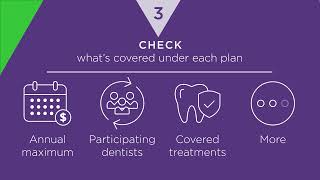What Are Annual Maximums in Dental Plans?
Dental insurance comes with a yearly cap known as the annual maximum. This is the highest dollar amount your insurance will pay for covered dental services within a calendar year. Once you reach this limit, any additional dental costs for the year become your responsibility out-of-pocket. For example, most federal dental benefits plans also apply these caps, making it important to review coverage details carefully. Knowing your plan’s annual maximum is crucial to budgeting for dental care, especially if you anticipate more than routine visits.
These coverage limits are designed to balance affordability for policyholders and insurance carriers. People who use dental coverage primarily for preventive care, such as cleanings and exams, may rarely approach the cap. However, those needing restorative work, like crowns, bridges, or root canals, may hit their maximum much faster. Reviewing benefits at the start of the year lets you plan dental procedures wisely and avoid surprise expenses.
Why Do Insurers Set Annual Maximums?
Annual maximums serve several important functions. Insurers keep premiums manageable for all participants by sharing financial responsibility with enrollees. For plan members, these limits encourage the prioritization of preventive care. Preventive services—like routine exams and cleanings—typically account for a small fraction of most annual maximums and help reduce the need for expensive treatments later on. According to data from the American Dental Association, consistent preventive visits can significantly lower the risk of major oral health problems.
The annual maximum model helps shift policyholder behavior by promoting ongoing oral maintenance rather than reactive care. Individuals are more likely to seek timely treatment and less likely to delay care until a problem becomes severe and costlier to fix.
How Do Annual Maximums Affect Your Dental Care Choices?
Understanding the annual maximum on your dental plan allows you to plan and prioritize procedures during the year. If you anticipate the need for extensive dental work—such as crowns, bridges, or implants—it’s wise to estimate how quickly you might approach your coverage cap. In these cases, budgeting for potential out-of-pocket expenses beyond the maximum helps prevent financial surprises.
Annual maximums are less likely to be a concern for those with straightforward preventive needs. However, even routine visits count toward the cap, so regularly monitoring your benefits usage remains good practice. Transparency with your dental office about coverage can also help ensure treatment plans align with your benefit limits.
What Happens When You Reach the Maximum?
Once your dental spending hits the annual maximum, your insurance stops paying for covered procedures until the new plan year begins. Any further dental bills, whether for preventive or major services, are yours to cover in full. This is why strategic scheduling and careful benefit tracking are key—especially if you anticipate a high volume of dental work in a given year. Some patients work with their dentist to split treatment schedules across plan years, maximizing reimbursement and reducing financial burden.
Tactics for Maximizing Your Dental Benefits
- Stagger Treatment: If you require multiple costly procedures, ask your dentist whether some work can be safely postponed to the next calendar year. This way, you can tap into a fresh annual maximum for additional coverage.
- Prioritize Preventive Care: Preventive treatments are often covered at 100% and will help you avoid larger dental issues down the road, minimizing the risk of quickly reaching your coverage cap.
- Track Your Claims: Monitor your insurance statements and claims activity. Knowing where you stand helps you schedule treatments and make informed benefit use decisions.
Applying these strategies helps you extend your dental dollars, minimize out-of-pocket costs, and ensure access to necessary care even if unexpected needs arise.
How Do Federal Plans Stack Up Against Private Dental Coverage?
Most private dental insurance and federal dental benefit plans have similar structures for annual maximums, often ranging from $1,000 to $2,000 per year. However, federal dental plans may feature special incentives, such as higher annual caps for long-term enrollees or rollover options that allow unused benefits to carry forward.
When comparing options, look at the full benefit package—not just the annual maximum. Consider if the plan covers the types of services you and your dependents are most likely to use. Details such as co-pays, deductibles, and provider networks will also influence which plan offers the best value for your budget and needs.
What If You Need Care That Exceeds the Cap?
Some dental procedures, like oral surgery or extensive restorative work, can far surpass a plan’s annual maximum. When this happens, patients have several options. Many dentists offer flexible payment plans for balances not covered by insurance. You might also use a Health Savings Account (HSA) or Flexible Spending Account (FSA) to cover the cost difference with pre-tax dollars. Open communication with your dental provider about timing and the necessity for procedures can lead to a treatment schedule that maximizes your insurance reimbursement.
In certain cases, supplemental dental insurance or discount dental programs can help bridge the gap. Exploring all available resources, including those available through your employer or trade associations, can ease the financial impact of high-cost dental care.
Looking Beyond the Annual Maximum: Holistic Planning
The annual maximum is just one component of a dental plan’s overall structure. When selecting a plan, evaluate additional factors such as deductibles, provider networks, exclusions, and co-payment responsibilities. For example, some plans may cover different procedures at varying percentage rates, or exclude certain elective treatments altogether. A comprehensive approach helps ensure your dental coverage supports your health and financial goals throughout the year.


